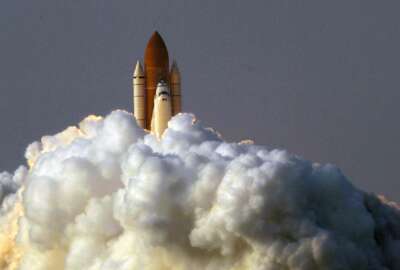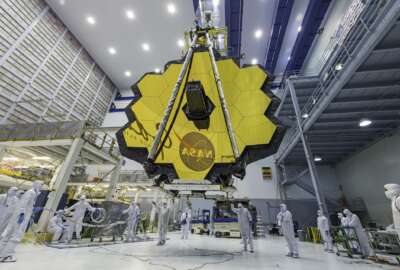
NASA says Webb telescope behind schedule, but ‘worth the wait’
The Webb space telescope's new launch date is March 2021. It will be larger than Hubble and 100 times better, according to NASA Program Manager Gregory Robinson.
The James Webb Space Telescope has hit a few snags in its schedule, but NASA says it will be worth the wait. Its new launch date is in March of 2021, and it will be larger than Hubble and 100 times better, according to Program Manager Gregory Robinson.
An independent review board in March pushed the expected launch date back to 2020, but NASA discovered another problem in April: the sunshields on the spacecraft meant to carry it out of the atmosphere. That pushed the date back by a few more months.
The telescope itself is only waiting on some follow-up testing. Robinson said it will be ready to integrate with the spacecraft as soon as that’s completed.
“The telescope and the instruments are completely developed,” he said on Agency in Focus – NASA. “They completed all their environmental testing at Johnson Space Center and were delivered to Northrop Grumman at Space Park earlier this calendar year.”
Robinson said there are two environments they tested for: launch and space. Launch involved large amounts of vibration, rattling and shaking. To prepare for that environment, the telescope undergoes mechanical, acoustical and vibration testing. The space environment, on the other hand, involves changes in pressure and temperature variations that NASA recreates on Earth.
The review board was focused on mitigating human errors, since there have already been a few at Northrop Grumman that caused the initial postponement to 2020, Robinson said.
“In a mission this size and this complex, small problems really cause huge impact,” he told the Federal Drive with Tom Temin.
That’s why NASA instituted mandatory inspection points, and makes it a policy to reward employees who put a hold on the entire process if they suspect even a small problem.
NASA also made it a point to bring back all the design engineers who originally worked on the telescope, to ensure that all the knowledge regarding the telescope would be in one place for testing and integration. That’s an unusual step; Robinson said design engineers are hard to keep in one place because they’re in such high demand. They usually move immediately from one project to another once the design phase is finished.
But that just shows the value NASA places on the Webb telescope. And the review board supported that assessment.
“They believe if we execute these recommendations and do all our normal work appropriately, Webb is certainly worth the wait, and I support them on that,” Robinson said.
And it’s important that everything be correct before the telescope launches. Robinson said it wasn’t designed with upgrades in mind because once it leaves the atmosphere, it can’t be enhanced.
“What you see is what you got,” he said. “Like with most spacecraft, we do updates on software to enhance little capabilities in certain areas. But it’s not meant to be improved over time.”
The telescope would have been designed a little differently if it had been meant to be serviced. Robinson said there would have been more parts exposed to the surface, and it would have been more modular.
He said its detectors can see much better than Hubble; Webb was designed to look back in cosmic time to determine origins. The intent is to discover first light.
It will also be able to shed more light on all the exoplanets that have been discovered recently. While it wasn’t designed with that in mind, it does have some extreme capability in that area. It should be able to provide enough resolution to tell scientists more about how habitable they are.
Copyright © 2025 Federal News Network. All rights reserved. This website is not intended for users located within the European Economic Area.
Daisy Thornton is Federal News Network’s digital managing editor. In addition to her editing responsibilities, she covers federal management, workforce and technology issues. She is also the commentary editor; email her your letters to the editor and pitches for contributed bylines.
Follow @dthorntonWFED




